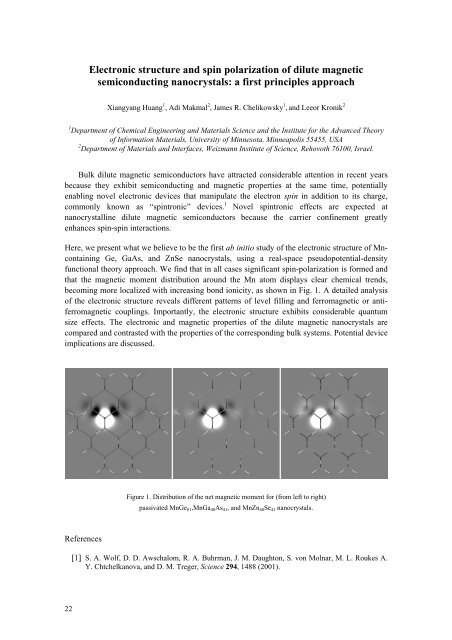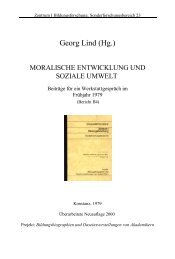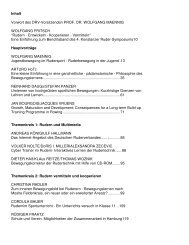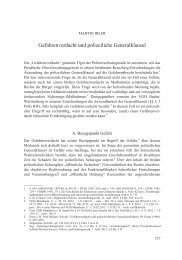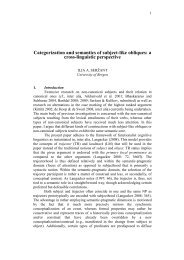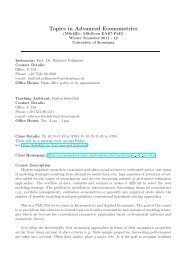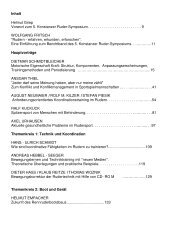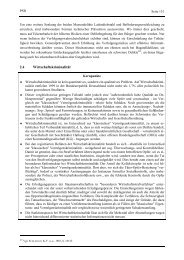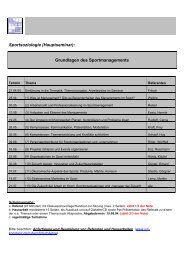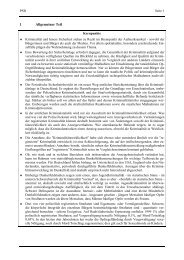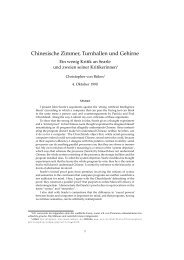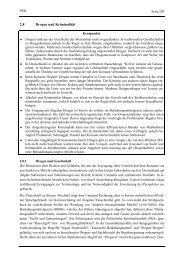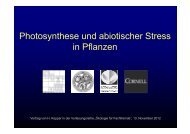Book of Abstracts Book of Abstracts - Universität Konstanz
Book of Abstracts Book of Abstracts - Universität Konstanz
Book of Abstracts Book of Abstracts - Universität Konstanz
You also want an ePaper? Increase the reach of your titles
YUMPU automatically turns print PDFs into web optimized ePapers that Google loves.
22<br />
Electronic structure and spin polarization <strong>of</strong> dilute magnetic<br />
semiconducting nanocrystals: a first principles approach<br />
Xiangyang Huang 1 , Adi Makmal 2 , James R. Chelikowsky 1 , and Leeor Kronik 2<br />
1 Department <strong>of</strong> Chemical Engineering and Materials Science and the Institute for the Advanced Theory<br />
<strong>of</strong> Information Materials, University <strong>of</strong> Minnesota, Minneapolis 55455, USA<br />
2 Department <strong>of</strong> Materials and Interfaces, Weizmann Institute <strong>of</strong> Science, Rehovoth 76100, Israel.<br />
Bulk dilute magnetic semiconductors have attracted considerable attention in recent years<br />
because they exhibit semiconducting and magnetic properties at the same time, potentially<br />
enabling novel electronic devices that manipulate the electron spin in addition to its charge,<br />
commonly known as “spintronic” devices. 1 Novel spintronic effects are expected at<br />
nanocrystalline dilute magnetic semiconductors because the carrier confinement greatly<br />
enhances spin-spin interactions.<br />
Here, we present what we believe to be the first ab initio study <strong>of</strong> the electronic structure <strong>of</strong> Mncontaining<br />
Ge, GaAs, and ZnSe nanocrystals, using a real-space pseudopotential-density<br />
functional theory approach. We find that in all cases significant spin-polarization is formed and<br />
that the magnetic moment distribution around the Mn atom displays clear chemical trends,<br />
becoming more localized with increasing bond ionicity, as shown in Fig. 1. A detailed analysis<br />
<strong>of</strong> the electronic structure reveals different patterns <strong>of</strong> level filling and ferromagnetic or antiferromagnetic<br />
couplings. Importantly, the electronic structure exhibits considerable quantum<br />
size effects. The electronic and magnetic properties <strong>of</strong> the dilute magnetic nanocrystals are<br />
compared and contrasted with the properties <strong>of</strong> the corresponding bulk systems. Potential device<br />
implications are discussed.<br />
References<br />
Figure 1. Distribution <strong>of</strong> the net magnetic moment for (from left to right)<br />
passivated MnGe81,MnGa40As41, and MnZn40Se41 nanocrystals.<br />
[1] S. A. Wolf, D. D. Awschalom, R. A. Buhrman, J. M. Daughton, S. von Molnar, M. L. Roukes A.<br />
Y. Chtchelkanova, and D. M. Treger, Science 294, 1488 (2001).


